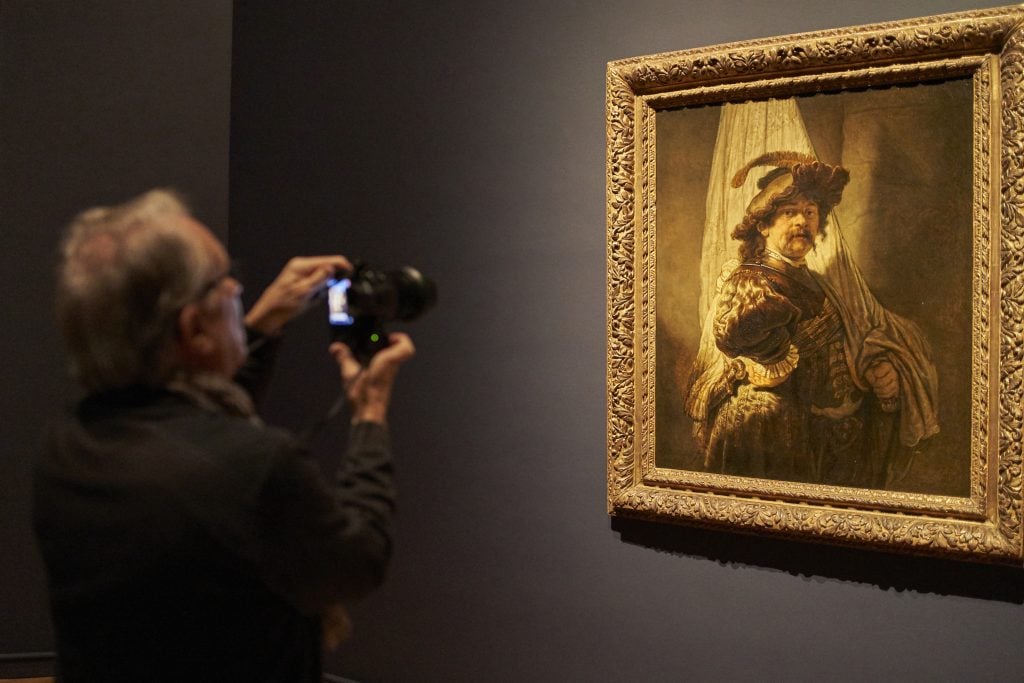Museums & Institutions
The Netherlands Makes a Controversial Decision to Buy a Prized Rembrandt for a Whopping $198 Million
Critics worry that the government's money will pass into a tax haven in the Cook Islands.

Critics worry that the government's money will pass into a tax haven in the Cook Islands.

Caroline Goldstein

The Dutch government, in association with the Rembrandt Association and the Rijksmuseum, has controversially agreed to pay a staggering €175 million ($198 million) for a painting by Rembrandt van Rijn to keep the work in the country.
The picture, a three-quarter-length self-portrait of the Dutch artist, has been in private hands for centuries, passing from the collections of King George IV to the French Rothschild family, which acquired the work in 1844. It later came to the children of Élie de Rothschild, the patriarch of the French branch of the banking and art-collecting family, when he died in 2007.
Deemed a “national treasure” by France in 2019, an export bar was set so that the Louvre could try to raise funds for the work. But after 30 months, the museum was unable to do so, and waived its right of first refusal for purchase.
In December 2021, the Dutch state announced its intention to buy the work for the national collection with the support of the Rembrandt Association, which will contribute €15 million ($17 million), and the Rijksmuseum, which will contribute another €10 million ($11 million). The remaining €150 million ($170 million) will come from state coffers.
But critics say the money will pass into a Rothschild family trust in the Cook Islands, which acts as a tax haven.
“How does this transaction relate to the policy of the Dutch government to combat tax avoidance, is our question to the state secretary,” senator Henk Otten told the Guardian, adding: “Why is the state involved in such constructions?”
Other government officials raised doubts about securing the work’s authenticity and provenance, saying the murky nature of the deal made such verifications impossible.
Nor does the timing of the purchase sit well with everyone, as COVID restrictions put a chokehold on the culture sector. Museums, theaters, and cinemas must remain closed until at least January 25, at which point authorities will reconsider lockdown measures.
In a tweet, the newly appointed culture secretary, Gunay Uslu wrote: “I understand the cry for help and that artists want to show all the beautiful things they have to offer us. But the opening of society must go step by step.”
The Rembrandt painting, completed when the Dutch Golden Age artist was just 30 years old, was completed upon his move from Leiden to Amsterdam. It depicts the painter in the costume of one of the many standard bearers who were stationed at the front lines of the Eighty Year’s War, which led to Dutch independence.
The painting is considered a turning point for the artist, who painted himself staring directly and confidently at the viewer with one hand on his hip, “full of bravado,” according to Rijksmuseum director Taco Dibbits.
“It is when Rembrandt became Rembrandt,” he added.
The process of acquiring the work will take four weeks, at which point the Netherlands will officially own the work, according to Dutch outlet the NL Times. Once the acquisition is complete, The Standard Bearer will tour the Dutch provinces, and ultimately reside in the Rijksmuseum’s Gallery of Honor.